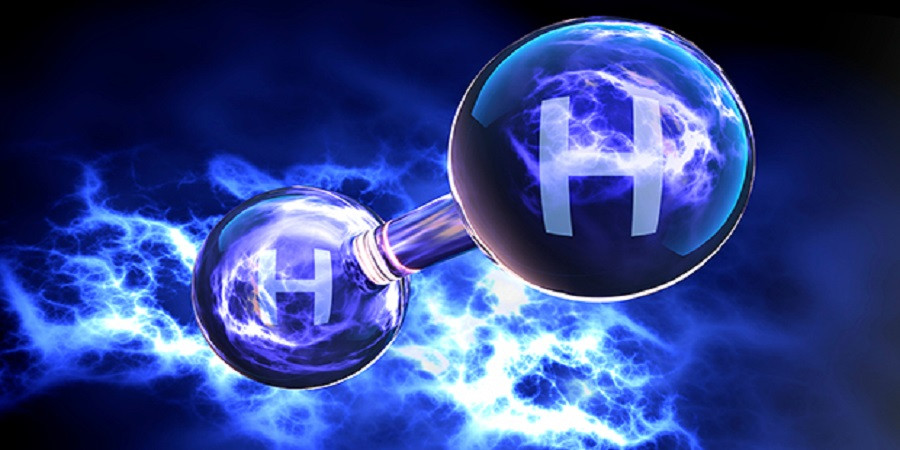The study, led by Heriot-Watt University and the Paul Scherrer Institute (PSI) in Villigen, Switzerland, was published in the Royal Society of Chemistry’s journal Sustainable Energy & Fuels.
Green, grey and blue hydrogen
Hydrogen is an energy carrier of the future: water is the only by-product from its use, whether it be to power a car or to generate heat for homes and industry. In fact, the method used to produce the hydrogen is what determines its environmental credentials. The optimal form is green hydrogen, produced by the electrolysis of water. For hydrogen to be green, however, the electricity used in this process must come from renewable sources, such as hydro, wind or solar power, which makes it close to carbon neutral.
At the moment, however, hydrogen produced in this way is expensive and not universally available, especially due to a lack of renewable electricity. Today, most hydrogen is therefore produced from natural gas or other fossil fuels. This is referred to as 'grey hydrogen' and does not benefit the environmental balance, as its production has a negative environmental impact and energy is lost during conversion.
A giant step for energy transition
Blue hydrogen offers something of a compromise and its role in the energy transition has been more widely discussed in recent months by experts and policymakers. Like grey hydrogen, it is also produced from natural gas using a process known as steam reforming, which heats and then splits the gas into hydrogen and carbon dioxide. In this case, however, the CO2 is not allowed to simply escape into the atmosphere, but some of it is captured and stored permanently underground in order to reduce the greenhouse gas effect. This process is known as carbon capture and storage (CCS) and improves the environmental balance.
Dr Mijndert van der Spek, Associate Director CO2 utilisation at the Research Centre for Carbon Solutions at Heriot-Watt University said: “With modern CO2 capture technologies, virtually all the CO2 produced in the hydrogen plant can be mitigated and, therefore, blue hydrogen can play a key role in the transition to a carbon neutral society, until there are sufficient renewable resources to produce green hydrogen in the large amounts needed“
Generating blue hydrogen
The key to generating blue hydrogen in the most climate-friendly way is therefore to ensure a high standard of technology. Countries such as the Netherlands or Norway are good role models as they are already able to extract and transport the natural gas with virtually no losses and emissions of less than 0.5 percent.
If almost all the CO2 emissions are captured during the reforming process and stored underground in former natural gas fields in the North Sea, for example – a solution already proven to be safe and effective over many years – then this form of blue hydrogen is almost as climate friendly as the green form.
“This study gave us the chance to study the climate impact of blue hydrogen in much greater depth,” says Christian Bauer from PSI’s Laboratory for Energy Systems Analysis, the lead author of the current study.
“Our partners at ETH Zurich used their simulation software to model the production of blue hydrogen, then at PSI we fed the results into our environmental balance models,” So we were able to replicate the entire production sequence, from natural gas extraction through to carbon capture and storage.”
The environmental balance
The environmental balance results paint a varied picture: whether blue hydrogen actually benefits the climate depends to a large extent on how much methane is lost en route from the point of extraction through to hydrogen production, and how effectively carbon is captured during the steam reforming of the natural gas.
Professor Bergerson of the University of Calgary explains: “The methane emissions are very diffuse, as they can occur at many different points along the production chain making them hard to identify. Depending on the production technology and the country in question, emissions can vary between a few tenths of a percent to several percent”. Dr van der Spek adds: “And when it comes to capturing the carbon dioxide, some methods are able to trap and store all the CO2, while others only manage around fifty percent.”
The natural gas industry has already recognised that production with the lowest emissions possible can secure its survival. It has set itself the goal of improving the technology in global use to such a high standard that methane emissions do not exceed 0.2 percent. Political discussions are focusing on threshold values that would allow blue hydrogen to qualify as a low-carbon, environmentally friendly fuel source.
“It is important here that such an emissions threshold really is observed along the entire production chain,” Bauer cautions, “Critical factors must not be concealed when assessing the environmental balance”. “In addition, governments need to play a much stronger role in assuring NG production with the lowest methane emissions possible. The recently announced 30% methane emission reduction can be seen as a good first step but is nowhere near the emissions reduction needed” warns van der Spek. “This also means that a block like the EU should revise its strategy of importing more natural gas from across its borders, as this typically comes with a much higher emissions footprint than gas produced within the EU.”
- This press release was originally published on the Laboratory news
